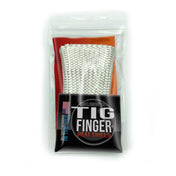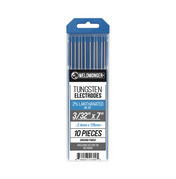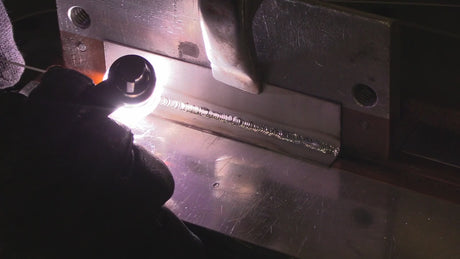4 inch 2g pipe freehand root pass technique and hot pass.
For this video, I am welding a root pass and hot pass in a 4 inch schedule 40 pipe in the horizontal (2G) position.
This pipe weld would often be done by walking the cup but I wanted to show a freehand technique for the root pass.
I like to walk the cup but sometimes you just can’t so its good to know how to freehand a root pass with a TIG finger®
The 3 key factors to consider during fit up for a TIG root pass are:
- Bevel angle
- Gap
- Land
- High/Low aka mismatch
Bevel angle is usually between 30 and 40 degrees but that depends on things like the welding procedure, code, or specification that might be used by a contractor.
For example, ANSI B31.1 might call for a 37 1/2 degree bevel while API codes might call for 30 degrees.
The bevel degree can affect the amperage it takes to weld a fully penetrated uniform root pass.
A typical gap for a tig root is 1/8” plus or minus 1/32” for certain piping codes but this differs per code.
Land is the flat spot on the sharp edge of the bevel. For TIG welding a land is often zero but sometimes 1/16”.
High Low should be as minimal as possible and for a test weld , there is no reason to have any at all. Taking extra time to eliminate any mismatch is time well spent.
Bevel angles, Gap, and Land all have an affect on amperage needed to weld a good root pass.
In this video, I used 1/8” gap, 30-35 degree bevel angles, and zero land.
I set the machine to 100 amps and for most of the root pass the machine was displaying 98 amps.
The technique I used was a forward and back freehand lay wire technique.
This is a technique I learned in a test shop many years ago and while it has worked well for me on both carbon steel and stainless, it is just one of many techniques that will work.
For the hot pass, I increased the amperage to 110 amps.
For both the root and hot pass, I used 1/8” diameter ER70S-6 filler rod.








2 comments
Thank you- I’m learning pipe techniques right now and this video was awesome.
Great information and videos .Thank you for sharing your knowledge and time.